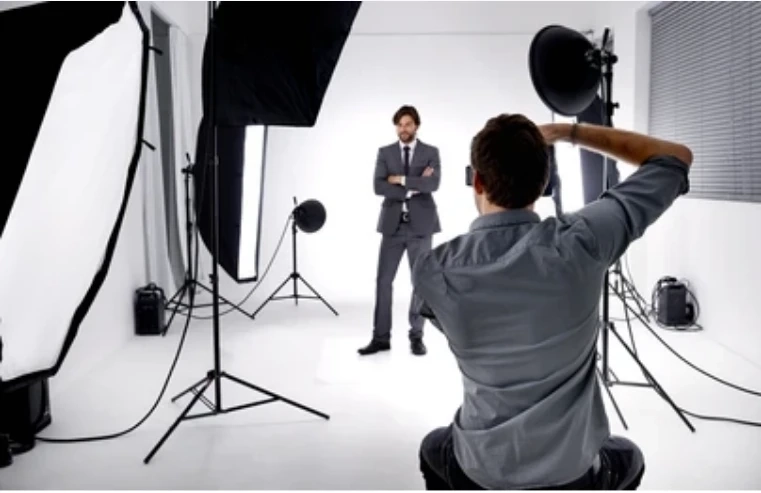Understanding Photography Fundamentals
1. Exposure Triangle
The exposure triangle is the foundation of photography, consisting of aperture, shutter speed, and ISO. Each element affects the exposure and overall look of your photos.
Aperture: The lens opening that controls the amount of light entering the camera. It also affects the depth of field, determining how much of the image is in focus. A lower f-number (e.g., f/1.8) allows more light and creates a shallow depth of field, while a higher f-number (e.g., f/16) lets in less light and provides more focus throughout the image.
Shutter Speed: The length of time the camera's shutter remains open. Fast shutter speeds (e.g., 1/1000s) freeze motion, while slow speeds (e.g., 1/30s) can create motion blur. Adjusting shutter speed is essential for capturing movement or reducing camera shake.
ISO: The sensor's sensitivity to light. Lower ISO values (e.g., 100) result in less noise and are ideal for bright conditions, while higher ISO values (e.g., 3200) are suitable for low-light situations but may introduce graininess.
2. Composition Techniques
Effective composition enhances the visual appeal of your photos. Key techniques include:
Rule of Thirds: Divide your frame into a 3x3 grid and place important elements along the grid lines or at their intersections to create a balanced composition.
Leading Lines: Use natural lines within the scene to guide the viewer's eye toward the subject or create a sense of depth.
Framing: Frame your subject using elements such as arches or windows to draw attention and add context to the image.
Symmetry and Patterns: Incorporate symmetrical elements and repetitive patterns to create striking and harmonious compositions.
Exploring Different Photography Genres
1. Portrait Photography
Portrait photography focuses on capturing the personality and expression of individuals. Key tips include:
Engaging with the Subject: Build rapport with your subject to make them feel comfortable and natural.
Choosing the Right Background: Select a background that complements the subject and does not distract from them.
Using Depth of Field: A wide aperture (e.g., f/1.8) can blur the background and make the subject stand out.
2. Landscape Photography
Landscape photography showcases natural scenery and environments. Essential techniques include:
Golden Hour Shooting: Capture landscapes during the golden hour (shortly after sunrise or before sunset) for soft, warm lighting.
Using a Tripod: Stabilize your camera to prevent shake and ensure sharp images, especially in low light or when using long exposures.
Incorporating Foreground Elements: Include objects in the foreground to add depth and interest to your composition.
3. Street Photography
Street photography captures candid moments in public spaces. Considerations include:
Best Camera for Street Photography: Opt for a small, quiet camera that allows you to blend in and capture spontaneous moments without drawing attention.
Observing and Anticipating: Be patient and alert to capture genuine interactions and events as they happen.
Respecting Privacy: Be mindful of individuals' privacy and seek permission when necessary to ensure ethical practices.
4. Macro Photography
Macro photography focuses on capturing small subjects with intricate details. Important tips include:
Using a Macro Lens: Invest in a macro lens to achieve close-up shots with high detail.
Controlling Depth of Field: Use a small aperture (e.g., f/8) to increase the depth of field and keep more of the subject in focus.
Stabilizing the Camera: Use a tripod or stable surface to avoid camera shake and ensure sharp images.
Choosing the Best Canon Camera for Photography
When selecting a camera, especially if you're considering Canon, it’s important to find one that fits your specific needs and photography style. Canon offers a range of cameras that cater to various preferences, from compact point-and-shoots to advanced DSLRs and mirrorless systems.
1. Canon EOS R6
Type: MirrorlessSensor: Full-frame CMOSFeatures: 20MP resolution, Dual Pixel CMOS AF II, in-body image stabilization, 4K video recordingBest For: Versatile photography including portraits, landscapes, and action shots. Its high-speed autofocus and excellent low-light performance make it a strong choice for a wide range of subjects.2. Canon EOS 90D
Type: DSLRSensor: APS-C CMOSFeatures: 32.5MP resolution, Dual Pixel CMOS AF, 10 fps continuous shooting, 4K video recordingBest For: A robust option for both stills and video, offering high resolution and fast performance. Suitable for enthusiasts who want a reliable and versatile camera.3. Canon EOS M50 Mark II
Type: MirrorlessSensor: APS-C CMOSFeatures: 24.1MP resolution, Dual Pixel CMOS AF, 4K video recording, vari-angle touchscreenBest For: Beginners and vloggers looking for a compact camera with great features and ease of use. Its flip-out screen and user-friendly interface make it ideal for a variety of shooting scenarios.Conclusion
Photography is a rich and diverse field that offers endless opportunities for creativity and expression. By mastering fundamental techniques, exploring different genres, and selecting the right equipment—such as the best Canon camera for your needs—you can enhance your skills and capture compelling images. Embrace the art of photography, experiment with new techniques, and continue to refine your craft to produce stunning and memorable photographs.


